Canadian Dollar to Rise Further, RBC Financial Model Shows
- Written by: James Skinner
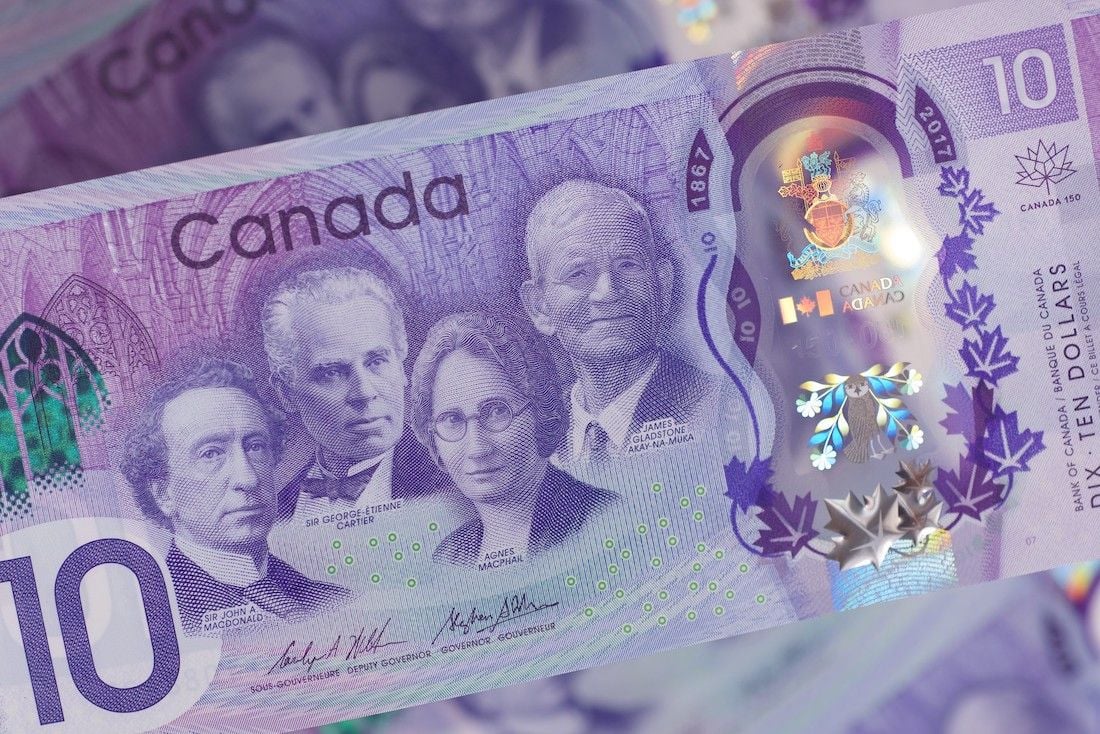
Image © Bank of Canada
- CAD gains 2.2% over USD in June but RBC says it can rise further.
- RBC financial model puts USD/CAD rate sub-1.30 in the short-term.
- CAD forecasts to be upgraded, GBPCAD forecasts face downgrade.
The Canadian Dollar advanced on its developed world rivals again Wednesday and remains top of the G10 league table for 2019, but it could rise even further over the coming weeks according to analysts at RBC Capital Markets.
Canada's Dollar was lifted Wednesday by rising North American oil prices, which are up after Philadelphia Energy Solutions was reported to be considering closing its refining complex in the city due to damage wrought on it by fire in the wake of an explosion last Friday. The complex is the largest on the U.S Eastern seaboard, which means Canadian oil producers could be called upon to fill any supply deficits in the U.S. for the foreseeable future.
However, there are many other factors that have helped to drive Canada's currency to the top of the G10 league table during recent months and a financial model built by RBC Capital Markets is suggesting that some of those could help the Loonie to climb even further still during the weeks and months ahead.
RBC, Canada's largest lender, is now on the verge of upgrading its Canadian Dollar forecasts as a result. Elsa Lignos, the bank's head of FX strategy, outlined the signal coming from the model in a note to RBC clients Wednesday.
"USD/CAD has had a big move MTD, selling off from 1.35 to sub-1.32. But our fitted framework points to USD/CAD even lower," Lignos says. "It is rare to see gaps of this size between USD/CAD & the fitted returns. The last two times we saw similar-sized gaps (early 2018 and early 2017), they were driven by USD/CAD overshooting to the topside and eventually correcting lower. This time, it’s the model pointing to a bigger move."
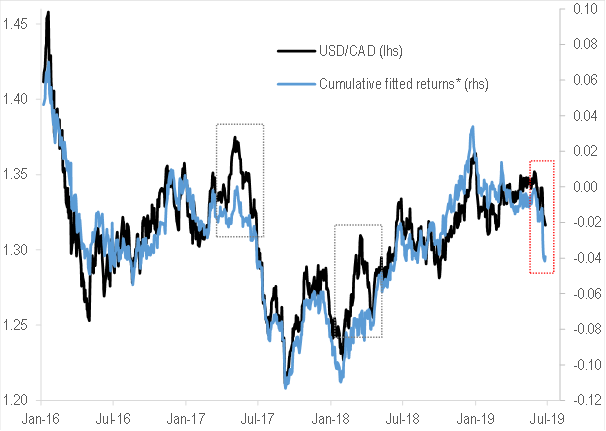
Above: RBC Capital Markets graph showing fitted returns path of USD/CAD Vs actual USD/CAD rate.
RBC's 'fitted returns' model seeks to identify the individual underlying drivers of upward and downward movements in the USD/CAD rate, as well as the extent to which any one of those drivers is influencing the exchange rate at any point in time. The model says that interest rate differentials, market risk appetite, oil prices and the general direction of the U.S. Dollar are the main forces influencing the USD/CAD exchange rate.
By combining the model's understanding of those drivers with RBC economics and financial forecasts, the bank is able to better guide clients on the likely direction of the most important Canadian Dollar exchange rate and, by implication, the outlook for Loonie rates.
"The main driver is the huge move in 2y rate spreads (~12bps since last week’s FOMC) but our supply-side proxy for crude and general USD direction are also playing a role," Lignos says. "We’ll be closely watching Friday’s Business Outlook Survey and April GDP. The Markit manufacturing PMI slipping to 49.1 points to some downside risks. If we can get through both without big negative surprises, we’ll also be looking at adjusting our forecasts."
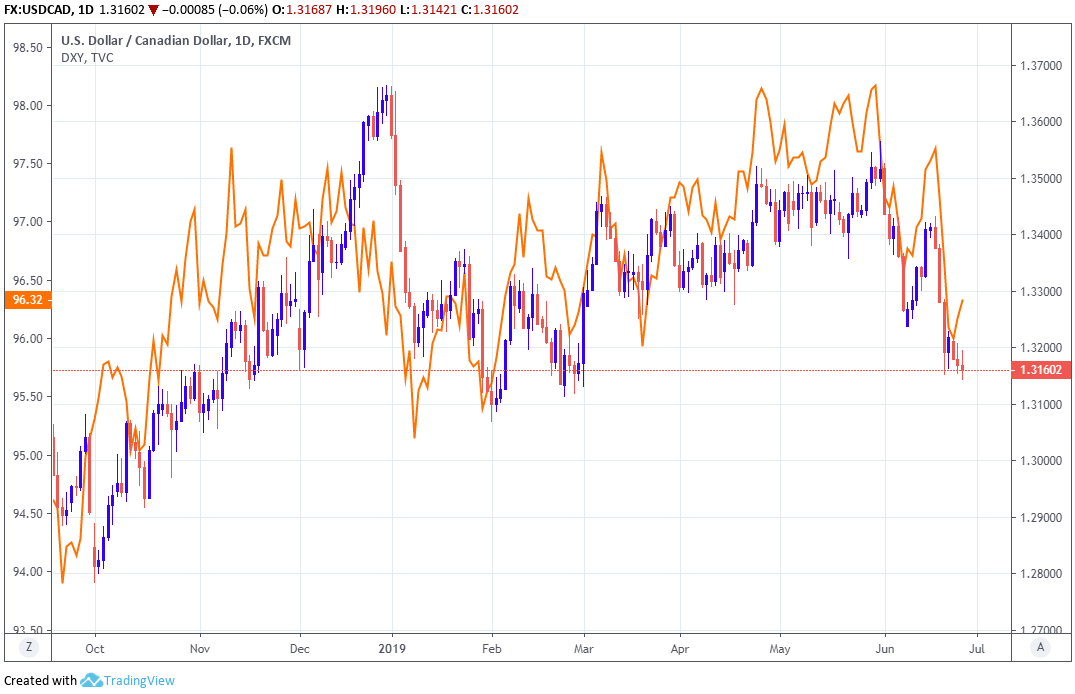
Above: USD/CAD rate at daily intervals, alongside the Dollar Index (trend of the general Dollar).
The USD/CAD rate was 0.16% lower at 1.3155 Wednesday and is now down 3.26% for 2019, while the Pound-to-Canadian-Dollar rate was 0.27% lower at 1.6676 and has fallen 4.17% this year.
RBC Capital Markets is still forecasting the USD/CAD rate will finish the 2019 year up at 1.35 but that projection could well change next week.
RBC also looks for the Pound-to-Loonie rate to close 2019 at 1.75, substantially above its Wednesday level, but that too might change even if only by default.
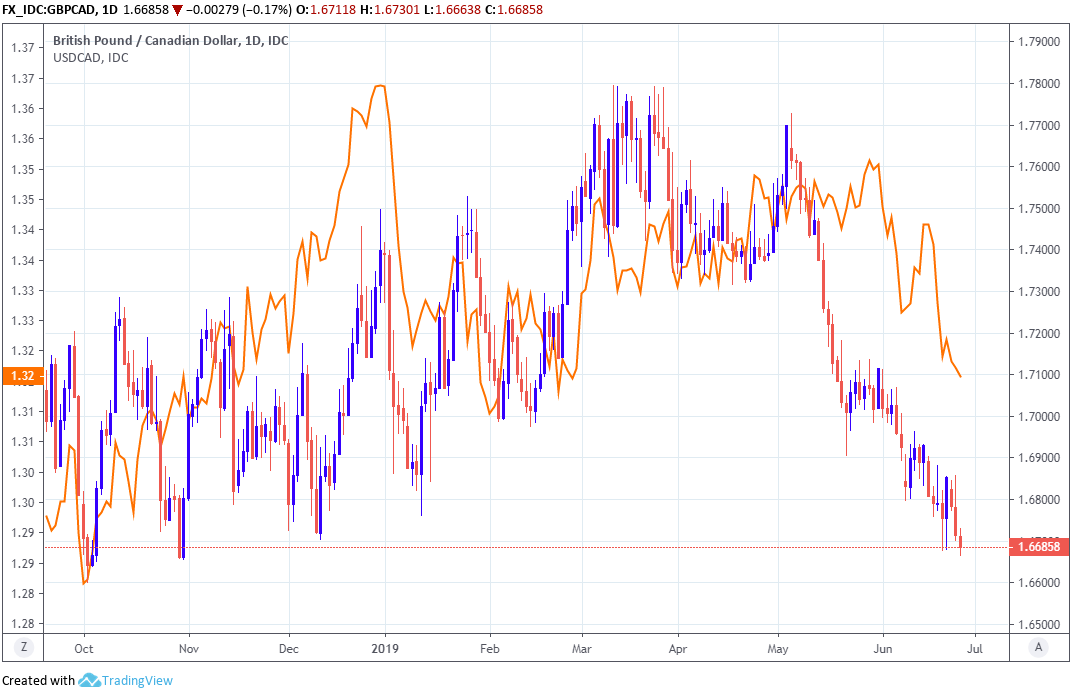
Above: GBP/CAD rate at daily intervals, alongside USD/CAD rate. Highlights GBP-specific weakness.
The USD/CAD rate has fallen sharply in the last month as the U.S. Dollar weakened in response to signs a landmark shift in Federal Reserve (Fed) interest rate policy is in the cards for the months ahead.
This has led yields on American government bonds to fall, and the gap between U.S. and Canadian yields to narrow. Yield differentials, or "rate spreads", have a significant influence over international capital flows as well as exchange rates.
Those yield differentials are influenced most by the outlook for relative central bank interest rate policies. Flows tend to move in the direction of the most advantageous or improving returns, with lower rates and yields normally driving investors out of and deterring them away from a currency. Rising rates and yields have the opposite effect.
The Fed has signalled this month, and a series of speakers said, that it could soon begin to reduce the benchmark U.S. interest rate from its current 2.5% level. Financial markets now expect the U.S. rate to fall to 2% by year-end.
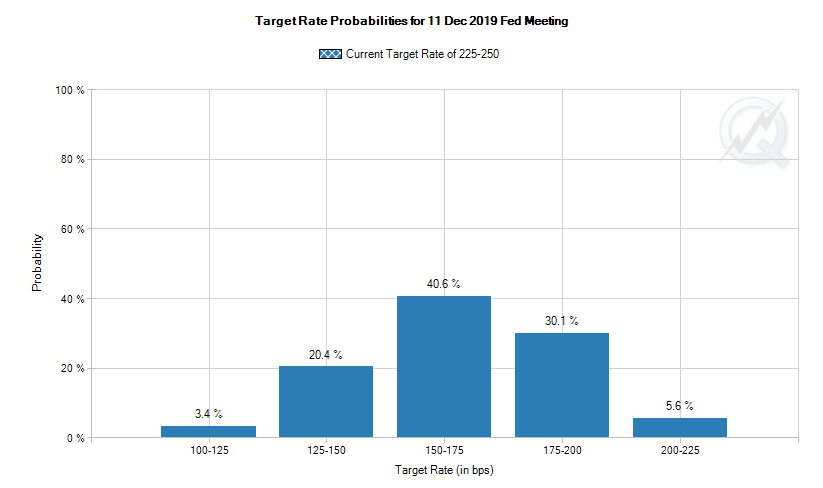
Above: CME Group estimate of market-implied probabilities for various U.S. rate levels at year-end.
Meanwhile, in Canada, investors are looking for the cash rate to remain at 1.75%. Bank of Canada (BoC) guidance is that future decisions will be dependent on developments in the economy and that it will pay close attention to "household spending, oil markets and the global trade environment."
The bank appeared to suggest in May that it could be quite some time before it lifts interest rates again, even if the domestic economic outlook has improved notably of late, but neither it nor any of its policymakers have said anything about Canadian interest rate cuts being on the horizon.
And even if Canadian rate setters did want to lower borrowing costs for companies and households the bank might still find it difficult to justify doing so because all of the BoC's preferred measures of inflation of inflation are either testing the 2% target, or are now already well above it.
This could mean the narrowing gap between U.S. and Canadian bond yields continues to support the currency for a while to come, particularly if the economy and jobs market remain in rude health.
Changes in interest rates are normally only made in response to movements in inflation but impact currencies because of the push and pull influence they have over capital flows, and their allure for short-term speculators.
Time to move your money? Get 3-5% more currency than your bank would offer by using the services of foreign exchange specialists at RationalFX. A specialist broker can deliver you an exchange rate closer to the real market rate, thereby saving you substantial quantities of currency. Find out more here.
* Advertisement




